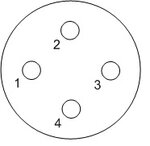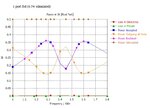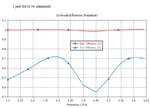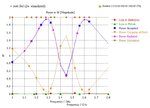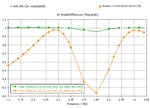slazen
Newbie
There is four fed patch for circular pol (see Attachments) simulated in CST. When 1 port is excited the S31 is about -4dB, S21=S41=-13dB, S11=-15dB. It means that total efficiency of antenna is less than 60%, because ~40% of power return to the port 3. When all ports simultaneous excitation are performed the efficiency more than 95%.
Why efficiency calc doesn't connected with S-parameters? Do you have some articles or books about the problem? Thanks.
Why efficiency calc doesn't connected with S-parameters? Do you have some articles or books about the problem? Thanks.
